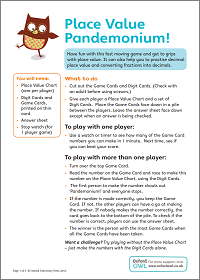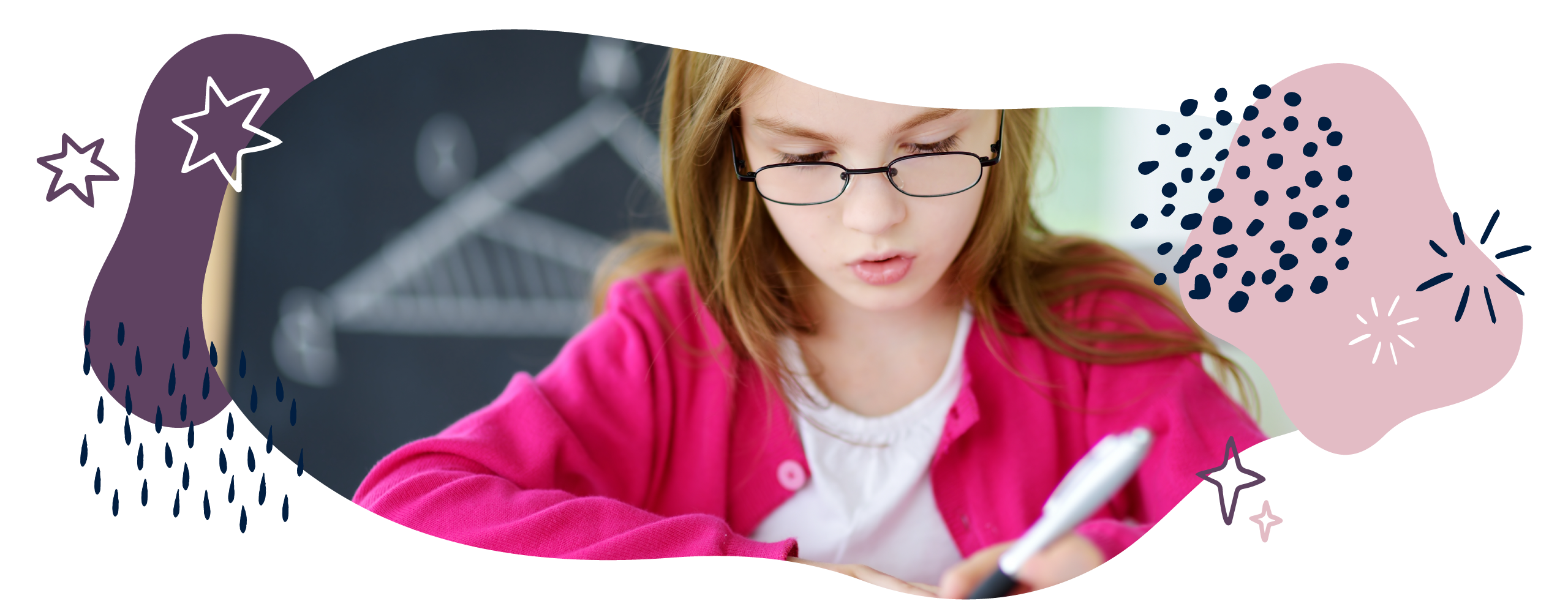Number & place value in Year 6 (age 10–11)
In Year 6, your child will read, write, and compare numbers up to 10,000,000. They will be able to round any whole number to a required degree of accuracy and solve complex problems using place value.
The key words for this section are number and place value.
What your child will learn
Take a look at the National Curriculum expectations for number and place value in Year 6 (ages 10–11):
Read, write, order and compare numbers up to 10,000,000
Note that your child will use the word ones and not units when talking about place value.
Round any whole number to a required degree of accuracy
Your child will learn to round any whole number to the nearest 10, 100, 1000, 10,000, 100,000, and 1,000,000.
72,145,674 rounded to the nearest 100,000 would be 72,100,000.
72,145,674 rounded to the nearest 1,000,000 would be 72,000,000.
Use negative numbers in context
Count backwards from 6 to ⁻3: 6, 5, 4, 3, 2, 1, 0, -1, -2, -3.
Your child will now be expected to calculate (for example, add and subtract) with negative numbers too. For example, they might be asked to calculate 3 – 7 = -4, or -2 + 4 = 2. Using a number line is a great way to visualise calculations with negative numbers.
Solve increasingly complex number problems
Your child will solve problems involving:
-
- Counting
- Ordering
- Comparing
- Rounding
- Negative numbers.
Their knowledge of place value will be very useful for this. They will use physical objects, drawings, diagrams, and mathematical symbols to visualise problems.
How to help at home
There are lots of ways you can help your child to understand number and place value. Here are just a few ideas:
1. Talk about large numbers
In Year 6, your child should be able to use the whole number system, including saying, reading, and writing numbers accurately.
Talk about large numbers in the real world, such as house prices, electricity meters, or football transfers. When you see big numbers like these, see if your child can read the number out loud.
Activity: Place value pandemonium

Have fun with this fast-moving game and help your child get to grips with place value.
2. Use place value charts
Place value charts can be a great way to help your child represent numbers and understand how the number system works. These charts will help your child to read, write and compare numbers, as well as to understand how zero works as a placeholder.
For example, 3,210,421 could be represented as follows:

3. Compare and order numbers
When comparing numbers up to 10,000,000, help your child understand that they need to look at the digit with the largest value first. For example, 2,132,654 is more than 1,123,432 as 2,132,654 has two millions, whereas 1,123,432 only has one million. If the largest value of both numbers is the same, then move on to the second, and then the third, and so on.
Try this game to practise comparing numbers. Write down 10 numbers up to 10,000,000 and the ‘>’ and ‘<’ symbols on separate pieces of paper. Deal your child two numbers, face down. Ask them to turn over the pieces of paper and to use the ‘>’ and ‘<’ symbols to show which number is bigger or smaller.
If your child would like an extra challenge, you could set a timer! How many pairs can they order correctly in 30 seconds? Now can they put all of the numbers in order? Ask them to explain how they ordered the numbers.
4. Make estimates
Being able to make accurate estimates is a valuable skill we use in everyday life. When calculating, encourage your child to use their rounding skills to estimate the answer before calculating precisely. This will help them to check if their answer seems reasonable.
If you are out shopping and you have picked up a few items, ask your child to estimate the total cost of the items. They will need to round the cost of each item to find the estimated total. For example, if you bought items costing £3.82, 82p, £4.10, and £2.45, your child could round each of these items to the nearest pound:
£3.82 to £4
82p to £1
£4.10 to £4
£2.45 to £2
Your child could then add the rounded amounts of £4, £1, £4, and £2 to find the estimated total of £11. When they calculate precisely and come to £11.19, they can feel fairly confident that their calculation was correct.
